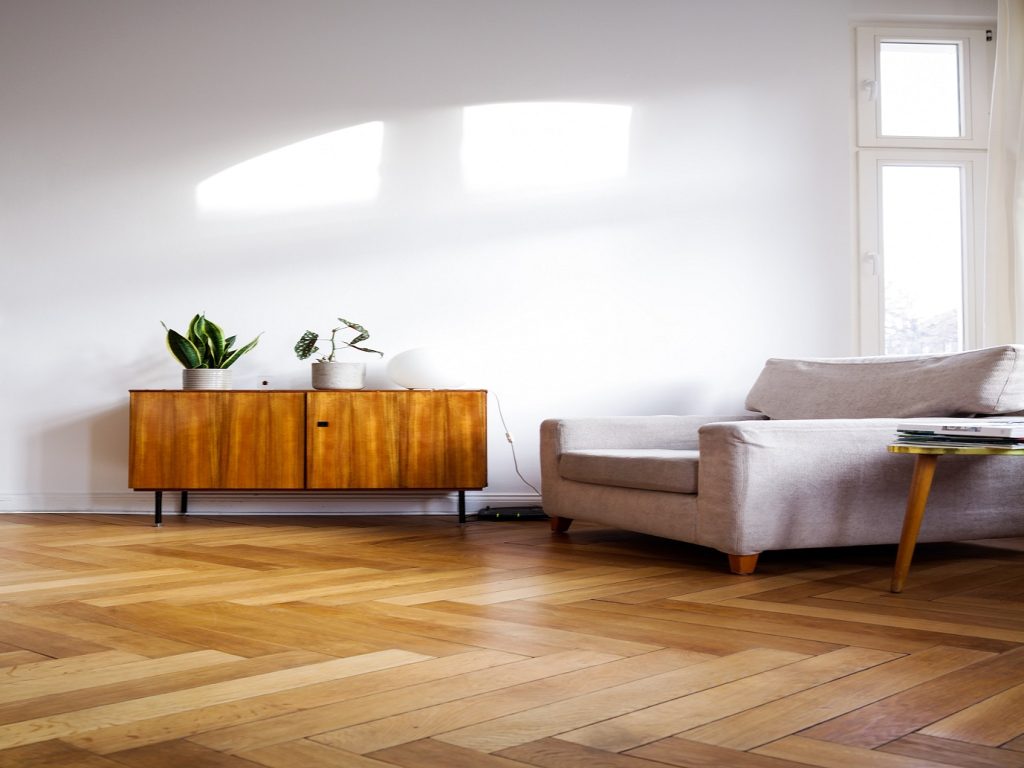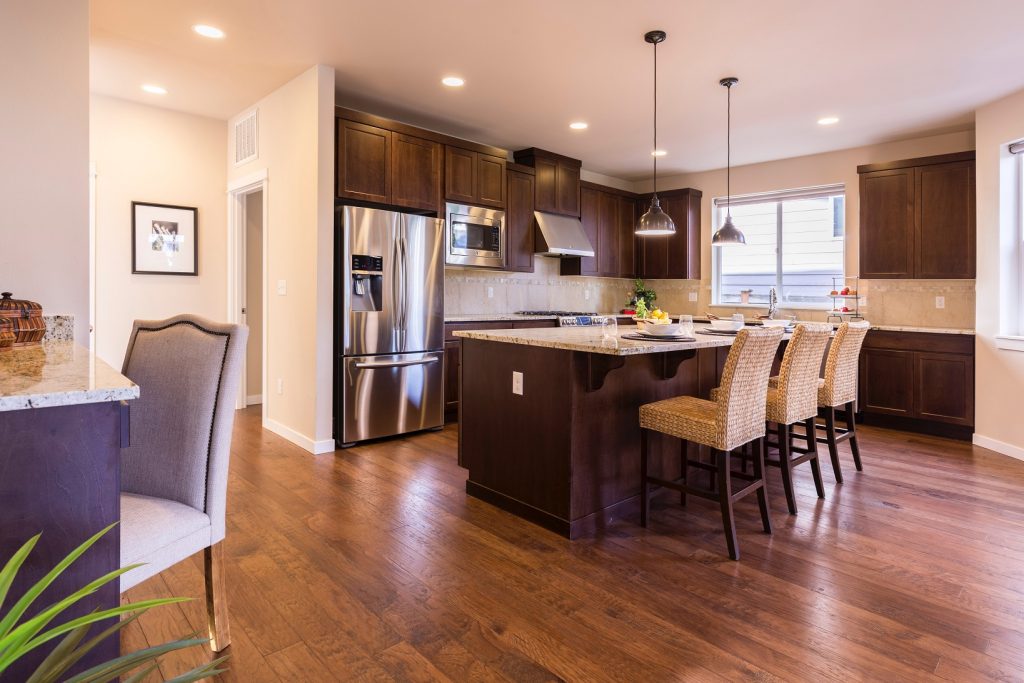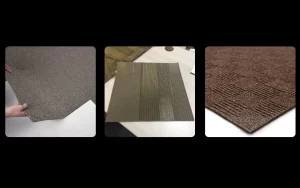No matter how well you care for them, hardwood flooring does not last forever. Hardwood floors will become scuffed, sunbleached, scratched, and more over the years. After years of dragging furniture and dragging feet your hardwood floors will either need to be replaced or refinished. There are benefits to both refinishing and replacing hardwood flooring, so it’s important to figure out the best option for you. Be sure to understand what goes into replacing or refinishing hardwood flooring as well as the

What to consider: refinish or replace hardwood floors:
If your hardwood flooring needs a spruce, there are a number of things to consider before deciding if you should rip up your existing hardwood and replace it, or refinish your floors to get another couple years out of them. Here are some of the main things to consider before making a decision.
State of Current Hardwood Floors
The first thing to consider is the current state of your flooring. Are they cracked and damaged with gaps and squeaky spots? How far gone are your current floors? If it’s just a few scratches and dull spots, you would likely be fine to refinish them. However, if your floors are significantly damaged, your best choice is to fully replace the floors. You don’t want to refinish your floors just for them to not look great and need to be replaced anyway.
Your Budget
Replacing hardwood floors can be quite expensive, so if your budget is lower you may think that refinishing is the best choice. If your floors are in good enough condition, refinishing is the more cost-effective option, but sometimes floors can’t be refurbished. If you need to replace your flooring but can’t afford hardwood floors again, luxury vinyl plank flooring has a similar look and feel to hardwood floors at a more affordable price point!
How Much Time You Have
Refinishing floors can be more time-consuming than installing new floors as with new flooring you get a blank slate. A floor of hardwood can be installed over a weekend while refinishing can take weeks. If you do not have the time or patience to live in a construction zone while your floors are getting refinished, you may want to consider replacing your hardwood floors.
Your Other Floors
Do you have all new flooring in every other room in the house? Is the area that needs a fix the whole home or just a small part? If you have matching hardwood floors that don’t need to be refinished or replaced, you may want to consider refinishing just to keep your flooring consistent. On the flip side, if all the other flooring is new and modern, replacing your hardwood may be the best option as you’ll ensure your entire home’s renovations are aligned.
Your Other Home Decor
You want your flooring to match the rest of your home. If your decor is incredibly vintage and classic, having the original flooring may be an important aesthetic feature. However, if you lean towards a modern look, replacing the flooring may be what is best for your home decor.

Benefits of Refinishing Your Hardwood Floors
The main benefit of refinishing your hardwood flooring rather than replacing is that your floors remain intact. This means that the seams connecting your different flooring types all remain as they are, which can be useful. Refinishing can be less expensive than replacing and can allow you to make your floors a consistent stain and finish.
Benefits of Replacing Your Hardwood Floors
There are many benefits to replacing hardwood floors versus refinishing them. By replacing your hardwood floors you have the opportunity to work with a completely clean slate. That means making sure your floors are level and ensuring your flooring is in perfect condition. If there is mold, moisture, and water damage, the only way to fix your flooring is by replacing it. Another benefit of replacing hardwood floors is that you will know exactly how your floors will look when installed. When it comes to refinishing you don’t necessarily know exactly how it will turn out, while with replacing the floors you will be able to get a really good idea of what each piece of flooring will look like.
Replacing hardwood flooring is also cleaner and quicker, which can be a huge benefit. You can use your hardwood floors as soon as they are installed, there’s no waiting period where you need to keep pets, toddlers, or anyone else off the newly refinished floors as they dry. If you’re DIY savvy, you may be able to replace your hardwood flooring for less than getting a professional to refinish your floors, meaning not only do you get brand new flooring, but you also can save some money. Hardwood floors are relatively simple to install if you have the right tools, so installing yourself is definitely worth looking into!
What Does Refinishing Hardwood Entail?
A full refinish of your hardwood flooring involves several steps. The first step to refinishing floors is a deep clean of the area. You need to repair damage and ensure that the entire area is dry and boards that do need to be replaced have been. You’ll also want to remove all your baseboards. During the preparation stage many people take the opportunity to paint the walls, but you’ll need to make sure the walls are painted and completely cured before embarking on the second step to refinishing: sanding. The floors need to be completely sanded down to make sure blemishes are sanded down and the protective layers are completely gone. You need a completely smooth surface to ensure that the stain takes evenly. All dust from sanding needs to be dealt with before you start staining. Staining is an exciting process as it shows what your newly refinished floors will look like. After the stain is complete and dry, you’ll apply all the protective coats to keep your flooring water resistant and stain-resistant. The protective coatings should also have a layer that is scratch resistant.

What Does Replacing Hardwood Entail?
Replacing your hardwood flooring is relatively simple. First, the baseboards need to be removed and all the old flooring must be taken out. Then, you can deep clean the base floor and perform any other renovations like painting the walls or fixing anything in the ceiling, as you have no flooring that’s at risk of being damaged. After all the dust is gone and the room is clean, you can install your new hardwood flooring. The floorboards are installed by using a mallet to close any gaps between the boards, then a floor stapler (a highly pressurized nail gun) will ensure that the flooring doesn’t move. You can move furniture and other items on top of the floor as it is installed, as once hardwood is nailed in, you’re good to go!
Should You Replace Or Refinish Hardwood Floors?
Deciding whether to replace or refinish your hardwood flooring can be a difficult choice. If you’re attached to your floors, choosing to have them refinished can be a great solution to bringing new life into your home. However, if there is any significant damage, such as large cracks, squeaky floorboards, or water damage, the only solution is to replace that area. Replacing your hardwood flooring is a relatively easy process that will refresh your home and ensure you have decades of beautiful floors left. If you have any questions about replacing your hardwood flooring in Edmonton, contact LCF Flooring! We have a wide selection of hardwood flooring available that can fit any style!








